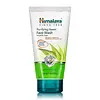What's inside
What's inside
 Key Ingredients
Key Ingredients

 Benefits
Benefits

 Concerns
Concerns

 Ingredients Side-by-side
Ingredients Side-by-side

Water
Skin ConditioningSodium Cocoyl Alaninate
Cocamidopropyl Betaine
CleansingAmmonium Lauryl Sulfate
CleansingAcrylates/C10-30 Alkyl Acrylate Crosspolymer
Emulsion StabilisingButylene Glycol
HumectantPEG-8
HumectantLactic Acid
BufferingSodium Hydroxide
BufferingNiacinamide
SmoothingAlpha-Glucan Oligosaccharide
CleansingPolymnia Sonchifolia Root Juice
Skin ConditioningMaltodextrin
AbsorbentAloe Barbadensis Leaf Extract
EmollientLactobacillus
Skin ConditioningTocopheryl Acetate
AntioxidantMethylchloroisothiazolinone
PreservativeMethylisothiazolinone
PreservativeWater, Sodium Cocoyl Alaninate, Cocamidopropyl Betaine, Ammonium Lauryl Sulfate, Acrylates/C10-30 Alkyl Acrylate Crosspolymer, Butylene Glycol, PEG-8, Lactic Acid, Sodium Hydroxide, Niacinamide, Alpha-Glucan Oligosaccharide, Polymnia Sonchifolia Root Juice, Maltodextrin, Aloe Barbadensis Leaf Extract, Lactobacillus, Tocopheryl Acetate, Methylchloroisothiazolinone, Methylisothiazolinone
Water
Skin ConditioningAmmonium Lauryl Sulfate
CleansingMelia Azadirachta Leaf Extract
Skin ConditioningCocamidopropyl Betaine
CleansingSodium Cocoyl Glutamate
CleansingGlycerin
HumectantAcrylates/C10-30 Alkyl Acrylate Crosspolymer
Emulsion StabilisingCurcuma Longa Root Extract
MaskingSodium Hydroxide
BufferingPhenoxyethanol
PreservativeParfum
MaskingMethylchloroisothiazolinone
PreservativeSodium Metabisulfite
AntioxidantCitric Acid
BufferingDisodium EDTA
Tocopheryl Acetate
AntioxidantCI 47005
Cosmetic ColorantBlue 1 Lake
Cosmetic ColorantWater, Ammonium Lauryl Sulfate, Melia Azadirachta Leaf Extract, Cocamidopropyl Betaine, Sodium Cocoyl Glutamate, Glycerin, Acrylates/C10-30 Alkyl Acrylate Crosspolymer, Curcuma Longa Root Extract, Sodium Hydroxide, Phenoxyethanol, Parfum, Methylchloroisothiazolinone, Sodium Metabisulfite, Citric Acid, Disodium EDTA, Tocopheryl Acetate, CI 47005, Blue 1 Lake
 Reviews
Reviews

Ingredients Explained
These ingredients are found in both products.
Ingredients higher up in an ingredient list are typically present in a larger amount.
Acrylates/C10-30 Alkyl Acrylate Crosspolymer is a synthetic polymer. It is used to thicken and improve the texture of products. Due to its properties, it can prevent water and oil ingredients from separating.
Ammonium Lauryl Sulfate is a type of sulfate. It can be bad for dry skin, be bad for oily skin, and cause irritation.
Cocamidopropyl Betaine is a fatty acid created by mixing similar compounds in coconut oil and dimethylaminopropylamine, a compound with two amino groups.
This ingredient is a surfactant and cleanser. It helps gather the dirt, pollutants, and other impurities in your skin to be washed away. It also helps thicken a product and make the texture more creamy.
Being created from coconut oil means Cocamidopropyl Betaine is hydrating for the skin.
While Cocamidopropyl Betaine was believed to be an allergen, a study from 2012 disproved this. It found two compounds in unpure Cocamidopropyl Betaine to be the irritants: aminoamide and 3-dimethylaminopropylamine. High-grade and pure Cocamidopropyl Betaine did not induce allergic reactions during this study.
Learn more about Cocamidopropyl BetaineMCI is a preservative and known skin-irritant. It has anti-bacteria anti-fungal properties.
Studies spanning several decades have shown this ingredient to cause skin irritation and allergies.
MCI is commonly combined with methylisothiazolinone (MI). Other names for this mixture include Kathon CG and Euxyl K 100.
The use of this ingredient varies around the world:
Learn more about MethylchloroisothiazolinoneSodium Hydroxide is also known as lye or caustic soda. It is used to adjust the pH of products; many ingredients require a specific pH to be effective.
In small amounts, sodium hydroxide is considered safe to use. However, large amounts may cause chemical burns due to its high alkaline.
Your skin has a natural pH and acid mantle. This acid mantle helps prevent harmful bacteria from breaking through. The acid mantle also helps keep your skin hydrated.
"Alkaline" refers to a high pH level. A low pH level would be considered acidic.
Learn more about Sodium HydroxideTocopheryl Acetate is AKA Vitamin E. It is an antioxidant and protects your skin from free radicals. Free radicals damage the skin by breaking down collagen.
One study found using Tocopheryl Acetate with Vitamin C decreased the number of sunburned cells.
Tocopheryl Acetate is commonly found in both skincare and dietary supplements.
Learn more about Tocopheryl AcetateWater. It's the most common cosmetic ingredient of all. You'll usually see it at the top of ingredient lists, meaning that it makes up the largest part of the product.
So why is it so popular? Water most often acts as a solvent - this means that it helps dissolve other ingredients into the formulation.
You'll also recognize water as that liquid we all need to stay alive. If you see this, drink a glass of water. Stay hydrated!
Learn more about Water